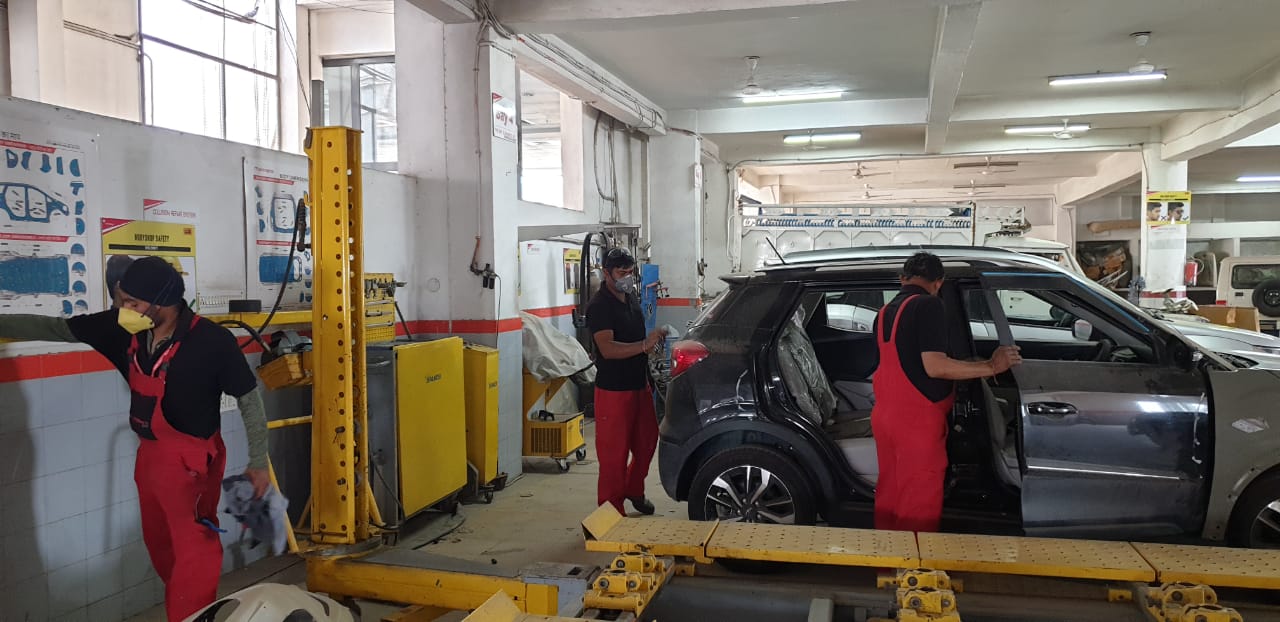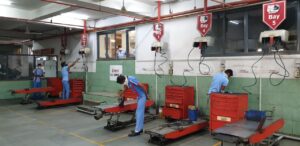Automobile sales slowdown as pandemic accelerates again
Automobile dealers raise alarm over the growing strength of the second wave of coronavirus pandemic across the nation as an increasing number of states move towards partial lockdowns and numerous other restrictions. The revival of the pandemic could not have come at a worse time for dealers as April 2021 is turning out to be an exact replay of the events of last year.
Last year, too, for days before the imposition of a complete lockdown on March 25, governments had been putting in place numerous restrictions. And in a déjà vu, the same scenario is being repeated across the nation, barring a full lockdown.
For automotive sector, as in the case of several other parts of the economy, the year 2020 was the worst ever with plunging sales of all kinds of vehicles for a good part of the year as the economy struggled to come back alive even almost a year after the calamitous lockdown began. Thus, dealers like Nikunj Sanghi, managing director of JS Four Wheel, one of the leading dealers for Hero MotorCorp and Mahindra in Rajasthan, were hoping that the year 2021 would bring better tidings. But now the growth in cases has cast a gloom even on the festive season that typically starts with series of nationwide festivals like Ugadi, Gudi Padwa, Baisakhi and Poila Boishakh. As this period, typically in early April, coincides with marriage season in India, it usually registers high sales.
However, with partial lockdowns in place already and rumours of a full lockdown being imposed, have shaken up the sector and also slowed down the sales further.
Mixed bag in March
The news emerging from the sector was hardly encouraging even earlier, save for passenger cars and tractors. Federation of Automobile Dealers’ Association says that while car sales grew March saw disastrous sales for all other categories. “Auto Registrations for the month of March witnessed double digit fall to the tune of -28.64 pc year on year, in spite of seven days of lockdown last year. Tractors and passenger vehicles were the only two categories which saw healthy double-digit growth,” says Vinkesh Gulati, president of FADA in a press release.
Indeed, the data from March is anything but encouraging. Sanghi says that the passenger vehicle sales, which saw a hefty growth of about 28 pc compared to March last year, have been growing for two main reasons. “People are cautious about their health and hence they are buying cars to avoid any risk of contagion. Moreover, in many places the transport links have not yet restarted, so people who have to go to work but are in places not well connected by public transport have little choice but to buy their own vehicles,” Sanghi, who was a past president of FADA, tells Media India Group.
Tractor sales have grown the fastest amongst all categories of vehicles and Sanghi says this is due to multiple reasons. “First, the rural incomes have been robust due to a record crop in the last season and good predictions for the next few months. Moreover, a big factor is that the migrant farm labour which used to come to states like Punjab or Haryana for harvests is not there due to the pandemic and hence farmers have bought tractors. But they also look at possibility of renting the tractor to others and hence have a parallel revenue stream,” he says.
Another factor is that the migrant labour itself which has not been able to go to other states for working, they have also turned to buying tractors that they then rent to others and hence create a revenue source for themselves.
Sanghi says that with the current forecast of harvests and rainfall, it looks like the growth in demand for tractors will remain robust for a while. Another factor driving tractor demand is the pickup in infrastructure development with record construction of highways and revival of other construction activity.
Now the bad news
While passenger vehicles and tractors have done well, the news is calamitous for all other segments of vehicles, including commercial vehicles, two-wheelers and three-wheelers. FADA says that as compared to March 2020, the sales in March 2021 were dramatically down for these categories. Sales of 2 wheelers fell by 35.3 pc mainly due to twin blows of high petrol prices and the horrible economic impact of the pandemic.
Citing Pew Research, FADA says that the financial woes brought by Covid-19 have pushed about 32 million Indians out of the middle class, undoing years of economic gains. This had its impact on 2-wheelers as it saw one of its steepest contraction in last few months. This coupled with high fuel prices and price increase acted as double whammy. It not only created a havoc in entry level customers mind but also kept them away from visiting showrooms.
Moreover, with the number of Covid-19 cases rising sharply and many states taking preventive measures like partial lockdowns, potential buyers have started staying away from making high ticket purchases and hence the inquiry levels are also very low.
Sanghi says that students are one of the biggest buyers of 2-wheelers but as educational institutions are shut or have been shut for a long time, the demand has fallen dramatically.
In the commercial vehicles segment also, the fall has been severe, with 42.2 pc lesser sales in March this year than last March. There are several factors behind this. One is the switch to new Bharat Standard-6 engines for higher fuel efficiency that have been mandated by the government. Since the prices of BS-6 vehicles are significantly more than the BS-5 engines, buyers prefer to wait and watch the situation of the pandemic before taking the plunge into a fairly high investment.
Prevailing economic conditions also deter people from buying commercial vehicles as not only have the lease financing options dried up but also the existing loan holders are under pressure due to repayments of existing loans which are proving to be difficult since their revenues have fallen dramatically and fuel prices as well as other operational costs have risen. Within commercial vehicles, the market for buses has been crushed since two of the biggest segments of buyers – schools and companies that transport their workers – have both been affected by the pandemic. Schools have been closed for over a year and work from home means that companies do not need to ferry their workers back and forth. Only sub-segment that has grown in the commercial vehicles are those needed for infrastructure development, notably road construction.
The three-wheeler segment is the worst impacted of all, with sales falling by over 50 pc. “This is mainly due to the arrival of e-rickshaws that are affordable and have little operational or maintenance costs. So, in practically all the key urban centres one can see that the internal combustion engine rickshaws are now making way in a significant manner to the e-rickshaws and this shift will only gain momentum going forward,” says Sanghi.
Broadly for the automotive sector, the future remains as unpredictable as it has been for the economy in general. Sanghi says that while for a quarter or two both passenger vehicle and tractor sales will continue to grow at a rapid clip, the suffering segments will see their losses intensify, putting a severe pressure on companies that are heavily exposed to any of the losing segments. Year 2021 may soon be turning from one of revival or redemption to one of many more reverses for the sector that is the largest part of manufacturing industry in India.












